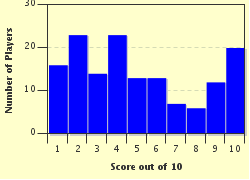Quiz Answer Key and Fun Facts
1. First some conceptual questions: A thermodynamic cycle describes a unique series of pressure, temperature, entropy, and volume changes that a fluid (e.g. air, water vapor, etc.) will undergo in order to produce power. For example, the Diesel Cycle describes the operations performed on the air inside a Diesel engine cylinder. Which thermodynamic cycle describes the operation of a gas turbine?
2. In the ideal Brayton Cycle, compression of the gas is assumed to be:
3. In the ideal Brayton Cycle, heat addition (usually in the form of combustion) occurs:
4. In an axial-flow gas turbine's compressor (the type commonly seen on an airliner engine) the spinning blades are called:
5. The MiG-15, made famous during the Korean War, was equipped with a different kind of compressor than that found on modern jet fighters and airliners. However, this type of compressor still sees use on some land-based gas turbines and some turboprop aircraft. What kind of compressor did the MiG-15 use?
6. The United States' M1 Abrams main battle tank is powered by a Honeywell gas turbine. Which of the following is an inherent advantage of a gas turbine engine and thus one of the reasons why a gas turbine was chosen for use on the Abrams?
7. In which type of gas turbine does a certain portion of the air entering the engine bypass the combustor and the turbine?
8. The gas turbines developed for the HTRE project in the late 1950s and early 1960s and intended for use on extremely long-range bombers were unique in that:
9. Some of the earliest gas turbine work was performed by Hans von Ohain in Germany during the 1930s. What was the fuel von Ohain originally used in the first prototype built in conjunction with the Heinkel company?
10. The Rolls-Royce RB211 series of turbofans is unconventional among typical airliner turbofans in that:
Source: Author
wilhelm33
This quiz was reviewed by FunTrivia editor
crisw before going online.
Any errors found in FunTrivia content are routinely corrected through our feedback system.


